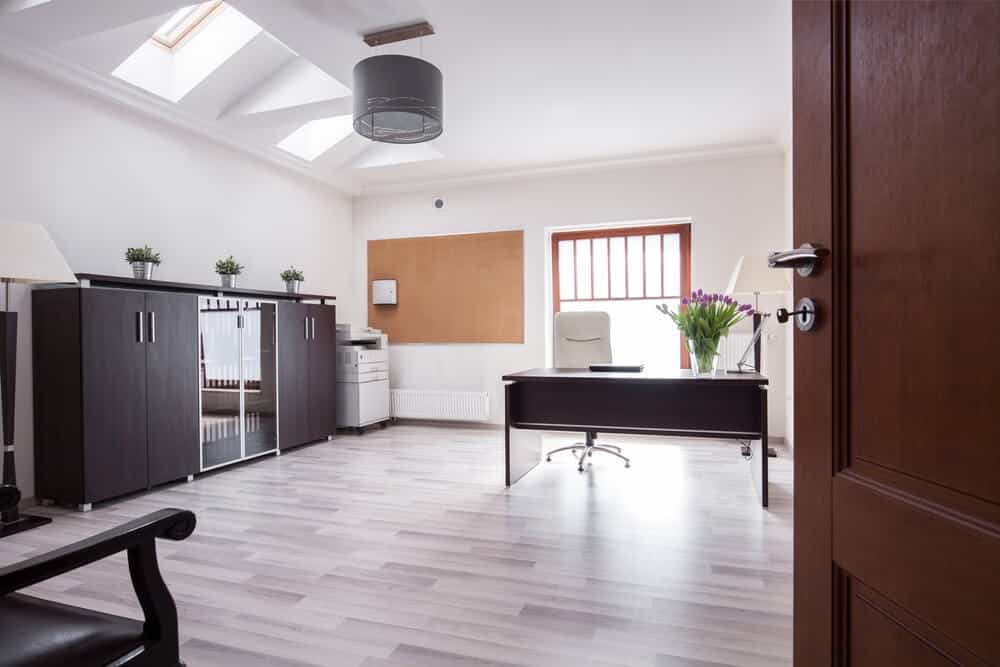Economist and author Linda Nazareth breaks down the symbiotic relationship between the economy and the workplace and how it will evolve in the future.
As the workplace continues to be redefined and restructured in the modern era, the economy is also adjusting to that change. Finding opportunities to work in an office under a recurring schedule at a singular location are becoming increasingly scarce and the economy is now having to account for a new way of transient working.
Linda Nazareth, a renowned economist, author and founder of Relentless Economics, has a forward-thinking approach to how this workplace shift will ultimately impact the economy in the years to come. Examining the co-dependent relationship between the economy and the workplace, she shares her insights about where both could be headed.
Your upcoming book, Work Is Not A Place, looks at how the economy will change as a result of a move towards work that is not done at a central location. Could you tell us about the relationship between the economy and the workplace and how you think the economy will change?
Nazareth: It’s a matter of which one’s causing which. The economy is changing in that it’s very competitive, companies are looking for whatever edge they can get, there’s technology that’s changing things and then on top of that you have demographics — which is a huge factor.
I’ve talked to people in Quebec and Atlantic Canada and there’s already a worker shortage. You have the possibility of working off-site, you have technology that lets people schedule easily, you put all these factors together and say “we can change the workplace.” Because employers are in a place where they’re now willing to negotiate, maybe not in every industry but increasingly, you’re having this conversation about where people should work, what is acceptable and what can you manage?
I think this is the very beginning of that conversation and we’ll see this evolve over the coming decades.

What demographics do you think would be hit hardest by this economic change?
Nazareth: I don’t know that it’s about age so much as it is about skill level. Workers of all different demographic characteristics will be welcomed if you need workers. You can see hiring in all kinds of ways when the economy is doing quite well, especially in Canada and the United States.
When the economy is not doing particularly well, you see lots of vulnerabilities. People who are older are quite vulnerable because they cost more as well as people who are inexperienced. One thing I’ve noticed over the years is companies don’t want to do any training. They’re in a very competitive environment where they want to just slide people in and that puts people who do not have direct experience at a disadvantage. This is why you often see younger people on internships because companies don’t want to necessarily pay, but they need someone to fit in.
A lot depends on where the economic cycle is, but I would go back to the most vulnerable being people with the fewest skills and the fewest in-demand skills.

Outside of direct financial impact, what do you see as some of the biggest challenges of this change and how can the current workforce be better prepared for it?
Nazareth: I think the workforce needs to be better prepared in the sense that they have to get ready for income volatility. If you have one high-paying contract, maybe you don’t have another one at all for a few months or one that pays less.
There are some people who are already used to this in industries like graphic design or entertainment. Sometimes we talk about the “Hollywood model” where people come together for one project then disband — they get used to working that way. If you’re a makeup artist who works on movies, you work when you have work and other times you realize you may not have work and you’ve hopefully saved for that or planned around it.
I think a lot more of the workforce has to think in those terms, but it’s not that easy. It’s also hard for institutions, it’s hard for banks to lend. Some of those people on contracts will earn quite well, but the old metrics are “where do you work every week?” and “can you show me your paycheque?”
It’s also hard for employers. It’s hard to manage a workforce that’s not a traditional workforce, the one that comes in and leaves. How do you protect the things you don’t want getting out there? How do you motivate people who don’t work for you full-time? It’s a whole new discussion with a lot of new challenges for individuals as well as companies.

How do you think this change will affect talent recruitment and will employers have a more difficult time finding employees that are willing to commit to an organization for a longer term?
Nazareth: I still think there will be a core of workers who want to commit to a longer term and a core of employers who will also want that. It’s cheaper for them not to have that and you have a back-and-forth of is it worth paying more to have people there, pay their benefits, pay the recruitment costs because there’s intangibles to having workers. Is it better just to have casual workers and bring them in as you need them?
In different parts of your life you may want different things. If you’re starting a family and buying a house, you may want the security of the long-term job. At other points, you may not. Baby boomers, if you look at surveys, are the ones who are ready to be on their own and not necessarily needing that traditional work format.
We also talk about the traditional model, but the traditional model may not be traditional hours and setup in the future. If you look at Netflix, they have this work style now where they don’t really set hours. You can get up whenever you want, but you have to get the work done — which can be even scarier. If you say “I’m not going to work Fridays” and the guy next to you is working Fridays and getting a lot more done than you then he’s in a better place.

How do you think this economic shift as a result of the workforce changing will impact commercial real estate costs moving forward? It also seems likely that there would be a surplus of commercial real estate available, what opportunities could this present for businesses?
Nazareth: I think we’re already seeing some of this happen. If you look at downtowns, coworking spaces are taking some of the space because some of the bigger companies don’t necessarily want to commit to having huge facilities. They’d rather just buy what they need when they need it and rent it from others.
If you’re looking at the big cities in Canada, there’s always going to be demand in places like Vancouver and Toronto. There’s always commercial space that’s going to be needed. If you look at the medium cities, maybe less so. Calgary has a huge vacancy rate right now and it will be years before they absorb all that and I don’t even know if they will because you don’t need the same number of workers sitting in offices.
Environmentally, I think there’s a lot of arguments for not making everyone commute to the same place and let them work from home if they want to. It’s not always the best thing because there’s real synergies that happen when people get together and you have to find ways to bring people in at least part of the time.

On the other side of that, how do you think this change will impact the commercial real estate market with more people working from home? Do you think communal / coworking spaces will have more viability in the future?
Nazareth: I think co-working spaces, if they’re priced in a way that makes sense to people, are very appealing. I’ve been to some coworking spaces and they’re nice, they’re appealing, they work for smaller and larger companies and for individuals. They’re a good alternative for people.
Working by yourself at home can work well, but it’s not necessarily 100 percent solution to things. Co-working spaces are part of what we’re going to have in the future and it’s good because some companies give up real estate and places like WeWork will take some of it.
Find out more about Linda’s upcoming book Work Is Not A Place and her other published works at the Relentless Economics website.
How and where do you prefer to work? Join the conversation and leave us a comment below.
Photos: Rawpixel, Shutterstock, Helena Lopes





